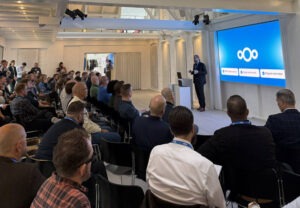For the last several decades, India has been quietly developing its economic independence muscles as it morphs into an IT leader with global prowess.

If you try to follow worldwide news, chances are that almost everything you see is about any combination of what the US, China, Russia, Israel and the EU are doing, or plan to do.
This isn’t good, because there is at least one more country that’s playing a big game, maybe more quietly than the others, but a big game nevertheless.
That country is India. From my own biased point of view here in Rome, India is particularly interesting as a potential partner for the EU, one that could help us avoid being crushed between the US and China.
India is big enough — growing more than China (especially in the long term, that is in younger people!) — and focused enough on its own cultural and political independence from all other countries, that everybody should pay close attention to what India has done, or plans to do, especially in the digital sphere that’s so crucial in today’s world.
For all the reasons above, and in the spirit of greater international cooperation, not rivalry, here are the three main areas of digital space in which I’d like to see the EU (and everybody else) pay more attention to what India is doing in digital space, and possibly learn a trick or two in the process.
Microelectronics
As I recently wrote here on Foss Force, Europe badly needs its own microchips, and India is one of the partners it should look at.
During the last decade, for example, India’s government started a Microprocessor Development Programme to develop VEGA RISC-V cores locally, that by 2022 had produced five RISC-V processor designs, with documentation publicly available for two Systems on Chip circuits based on those cores. That project is just part of a wider plan to establish a robust and Linux-friendly chip design ecosystem in India.
India also approved a $10 billion plan to attract chip and display makers in 2021 and went on to develop its first chip foundry in 2023. Those are probably some of the reasons why Apple aims to make most iPhones for the US in India by 2026.
Large Scale Digital Deployments
When it comes to deploying large, public digital infrastructures, India has something to teach EU, and the world in general.
For example, having followed for years the deployment of Aadhaar, India’s digital identity system, I am well aware that it created several security problems and was particularly hard to adopt for poorer Indians. Then again, the task was colossal: in 2009, there were 400 million Indians without “a formal identity of any kind.”
Therefore, without ignoring all the problems that Aadhaar deployments caused, or India’s tightening control over online content, I have to acknowledge that India has been doing something big, that also matches quite well what I wrote at the beginning of this post. That is, I have to acknowledge that, as P. Korsten put it in 2023 (emphasis mine):
- “While [India] has developed centralized public infrastructures like Aadhaar, its approach to digital identity and payments is modular and open-source. This not only aligns with Europe’s commitment to data protection but also presents a potential middle ground between the centralized models of the US and China.”
- “[With such initiatives]… India hopes to position itself as a neutral third force between the transactional West and an authoritarian China.”
“As India prepares to export its Stack, understanding its approach offers insights into a trajectory that harmonizes the advantages of both centralized and decentralized systems. It also aids in grasping the geopolitics of the digital landscape in the upcoming years.”
Artificial Intelligence
I have already written at length about how and why the current way to AI is embarrassingly broken, and when even The Economist says “Forget DeepSeek (A $6m LLM isn’t cool. A $6 one is.),” it seems obvious to me that the first country that invents a solid, but really cheap approach to AI may win.
India is interesting here too, both at the hardware and at the software levels. On the first front, there are Indian labs that are right now testing how to break free from Nvidia by replacing expensive GPUs with CPUs in AI deployments.
Software-wise, although LLMs are nowhere near real intelligence and probably never will be, they are too useful to ignore. That’s why India intends to build home-grown, foundational LLM models by 2025 as part of its larger IndiaAI Mission, designed to ensure that AI technologies are developed in ways that are socially inclusive, economically viable, and technologically cutting-edge.
India is doing this for all sorts of strategic reasons, many of which would be equally valid for Europe.
To see what I mean, consider the fact that one of the officially stated reasons is robust support for local languages, because foreign models have not only struggled to provide it, but have also introduced cultural biases. If you ask me, this issue alone makes LLM partnerships with India the way to go for a continent with 287 languages, like Europe.
India can also teach lessons in how to save money on AI beyond the studies I’ve already mentioned. Did you know that there is an India AI Compute facility, that includes the establishment of a state-of-the-art AI compute infrastructure featuring 18,000+ GPUs? And did you know that those GPUs will soon be subsidized to cost be as low as $1 per hour, to ensure that even cash-strapped companies and universities can afford research and development of new LLM-based services?
All in all, it’s time for Europe to start looking East, but not necessarily so far as China, isn’t it now?

Marco Fioretti is an aspiring polymath and idealist without illusions based in Rome, Italy. Marco met Linux, Free as in Freedom Software, and the Web pre-1.0 back in the ’90s while working as an ASIC/FPGA designer in Italy, Sweden, and Silicon Valley. This led to tech writing, including but not limited to hundreds of Free/Open Source tutorials. Over time, this odd combination of experiences has made Marco think way too much about the intersection of tech, ethics, and common sense, turning him into an independent scholar of “Human/digital studies” who yearns for a world with less, but much better, much more open and much more sensible tech than we have today.





